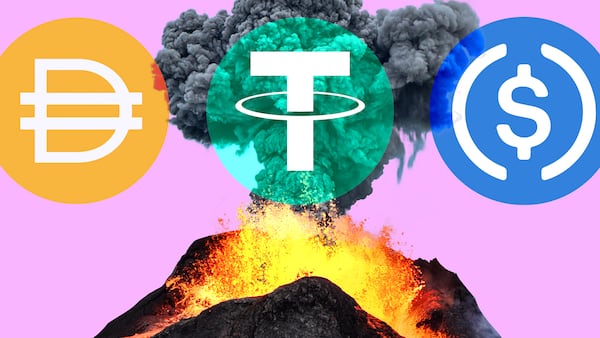- Up to $1 trillion could leave developing-world banks by 2028.
- Egypt, Pakistan, and Brazil are among the most exposed, analysts say.
Stablecoins could trigger the largest capital flight from emerging markets banks in history.
That’s according to UK bank Standard Chartered, which forecasts that as much as $1 trillion could move into dollar-pegged digital currencies over the next three years as savers in fragile economies seek deposit stability.
“Stablecoins give consumers and corporates in emerging markets new access to what is effectively a USD-based bank account,” said Geoffrey Kendrick, head of digital assets research at Standard Chartered, in a report to investors seen by DL News. “That makes deposit flight a greater risk in emerging markets than in developed markets.”
The warning comes as stablecoin issuers are flying high on the back of a slew of victories.
Over the past 10 months, US President Donald Trump’s pro-crypto policies have fuelled the crypto industry’s impressive growth. He has appointed industry supporters to key government positions, fired off a barrage of pro-crypto executive orders, and signed a landmark stablecoin bill into law.
‘Digital dollarisation’
Yet, Standard Chartered’s analysis shifts the focus from the opportunities to the risks of the stablecoin success story.
The report covers 48 countries and finds that two-thirds of all stablecoin holdings already belong to users in emerging markets.
Kendrick warns that if the trend continues, developing nations could face a “digital dollarisation” wave, where citizens hold stablecoins instead of domestic currencies. That risks weakening the local currencies.
The report identifies Egypt, Pakistan, Bangladesh, Sri Lanka, Turkey, India, Brazil, South Africa, and Kenya as most vulnerable.
Many of these countries already face huge deficits or depend heavily on inward remittances, both factors that make them susceptible to stablecoin-driven outflows.
Kendrick said the appeal of safety and liquidity outweighs returns. “Return of capital matters more than return on capital.”
Stablecoins’ combined market capitalisation is projected to hit $2 trillion by 2028, up from around $280 billion today, according to Standard Chartered.
Of that, about $1.2 trillion could sit in emerging-market wallets, largely as savings accounts held in tokenised dollars.
Winners and losers
The trend isn’t purely negative.
Standard Chartered notes that stablecoins could improve financial inclusion and remittance flows, offering faster, cheaper access to the dollar in regions where banking access remains limited.
However, the bank warns that the same technology enabling inclusion could destabilise domestic credit systems if policymakers fail to adapt.
Some governments are already reacting. Nigeria has launched a central bank digital currency, while India and Mexico are rolling out instant-payment networks to modernise domestic finance and reduce the appeal of dollar-pegged coins.
Still, these efforts may not be enough to stop the shift.
Stablecoins’ 24/7 liquidity, low costs, and perceived safety are proving irresistible to households tired of bank instability and currency depreciation, Kendrick said.
Developing countries are “standing at a crossroads between financial innovation and instability.”
Crypto market movers
- Bitcoin is up 0.3% over the past 24 hours to trade at $123,700.
- Ethereum up 3% over the past 24 hours, trading at $4,670.
What we’re reading
- Will Figure’s stock surge by 34%? These analysts are bullish due to one big reason — DL News
- Bitcoin ETFs seen to add $20bn in inflows before 2026 as price hits new record — DL News
- MetaMask to Distribute $30 Million in LINEA Token Rewards — Unchained
- 3 tokens I’m circling for uptober — Milk Road
- Railgun cracks new privacy feature requested by Ethereum co-founder Vitalik Buterin
- — DL News
Lance Datskoluo is DL News’ Europe-based markets correspondent. Got a tip? Email lance@dlnews.com.









